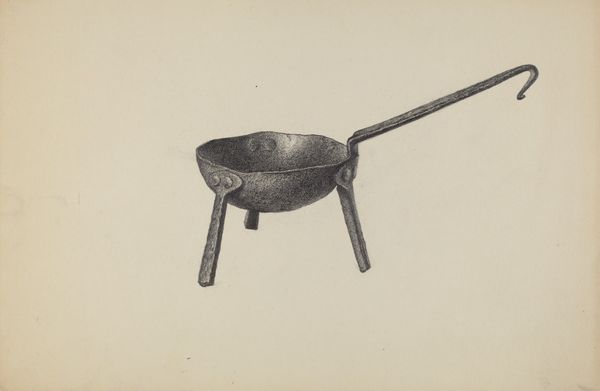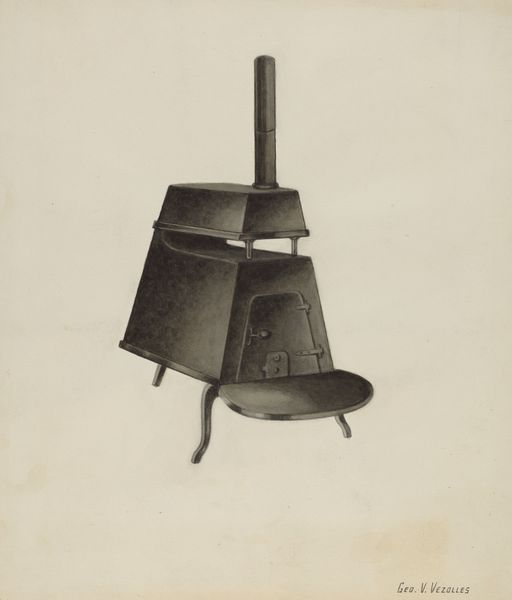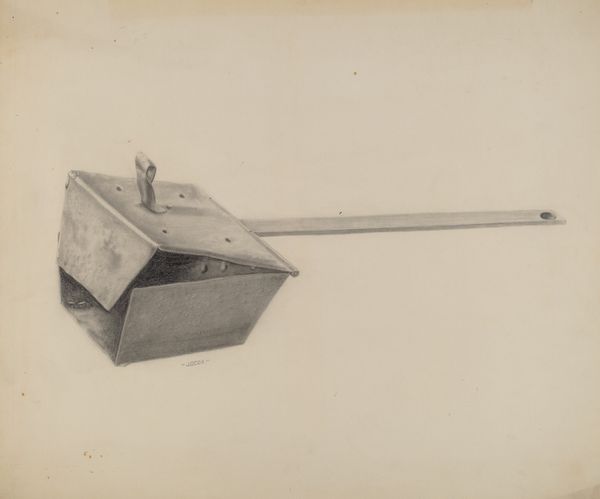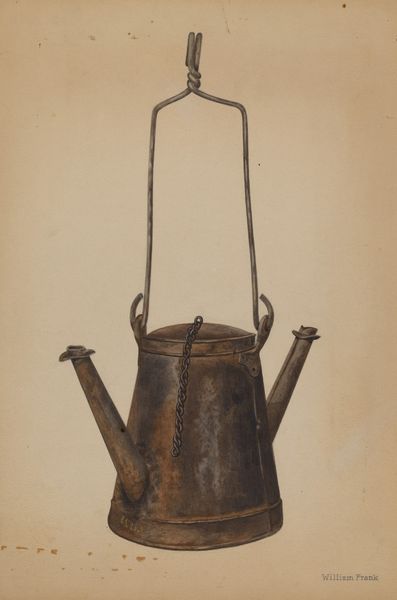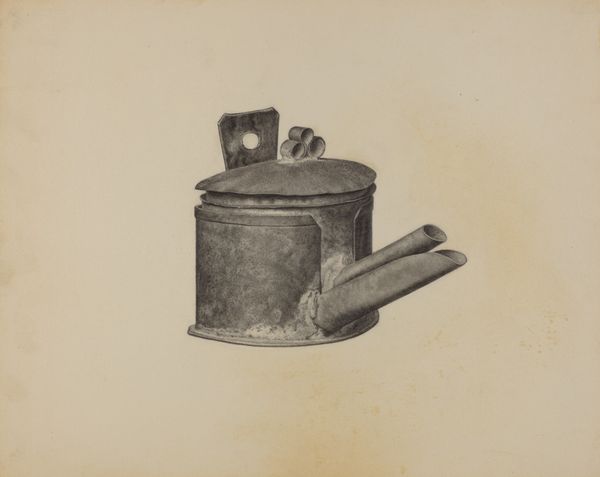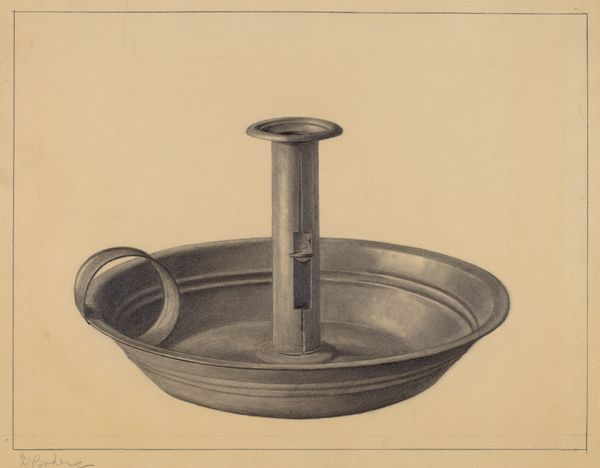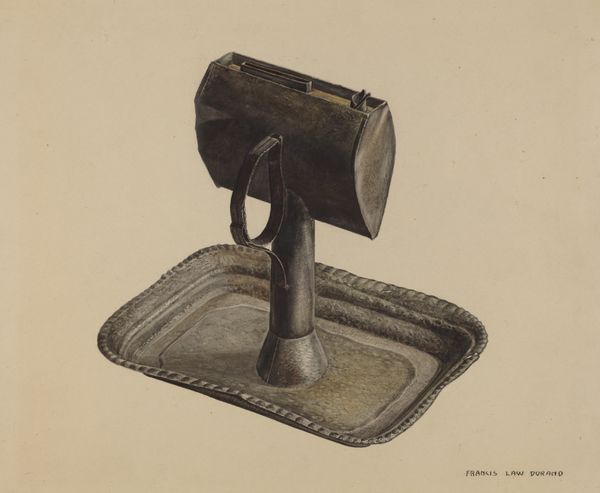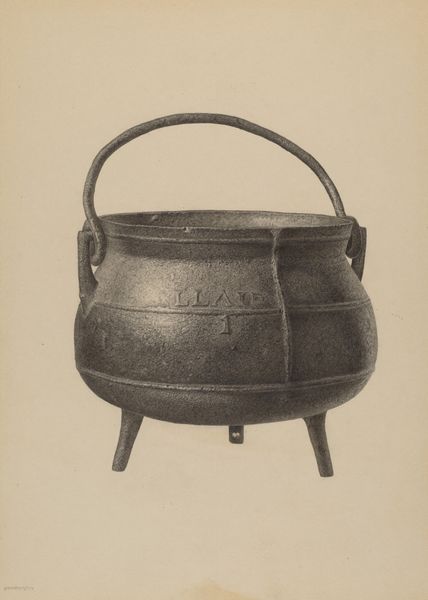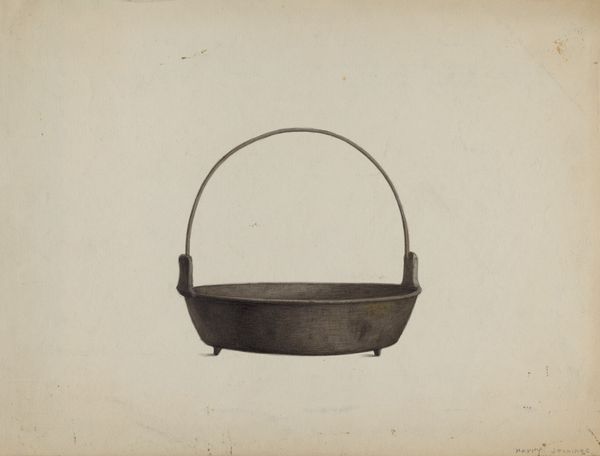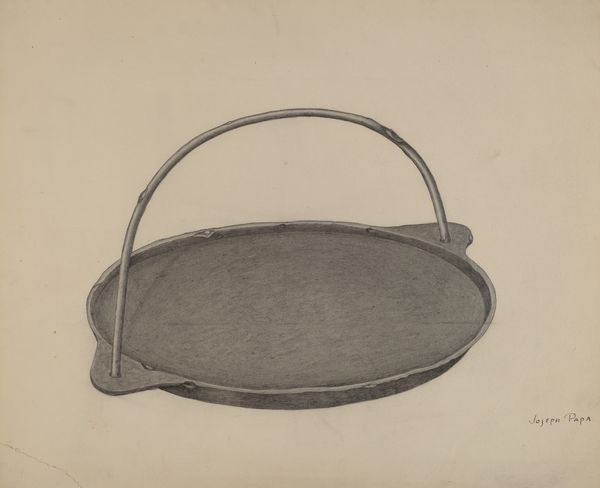
drawing
#
pencil drawn
#
drawing
#
amateur sketch
#
toned paper
#
light pencil work
#
pencil sketch
#
charcoal drawing
#
pencil drawing
#
pencil work
#
heavy shading
#
graphite
Dimensions: overall: 35 x 44 cm (13 3/4 x 17 5/16 in.) Original IAD Object: 20" long; 11 3/4" high; 10 1/2" in diameter
Copyright: National Gallery of Art: CC0 1.0
Editor: This drawing is called "Coal Scuttle," made around 1938 by Mildred Ford, and it looks like it's primarily graphite on paper. It feels almost like an industrial still life – so utilitarian, yet there’s a definite elegance in the rendering. What catches your eye in this image? Curator: The "Coal Scuttle" transcends mere representation. It holds, doesn’t it, layers of meaning beyond its functional purpose? The coal scuttle itself—an object of the domestic sphere—speaks of warmth, hearth, and perhaps labor, all tied to a specific moment in time, the late 1930s. It echoes of the Great Depression. The very act of depicting it, carefully and with attention to light and shadow, elevates it. Editor: Elevates it how? Curator: Consider the scuttle. Is it not a vessel, a container? Throughout art history, vessels are associated with femininity, the womb, but also ideas of plenty, nurture, and the secret hidden life within the home. And the use of graphite… Doesn't its monochrome suggest austerity, the practicalities of the working class experience? Is Ford possibly commenting on her socio-economic conditions? Editor: That's a completely different perspective than what I initially had. I was mostly thinking about form and light, not its symbolic value! Curator: Don't you think the act of observation itself has symbolic weight? The choice to represent this humble object implies an engagement with everyday life, dignifying what is often overlooked. And that, in itself, is quite powerful, right? What's your feeling now? Editor: I hadn't thought of it as making something so ordinary almost heroic through observation, but now I do see it. It’s a deeper comment on that era than I initially realized. Curator: Indeed. Everyday objects possess a quiet potency when we examine them through the lens of history, memory, and material culture. I also feel connected through my family history with this art object!
Comments
No comments
Be the first to comment and join the conversation on the ultimate creative platform.
